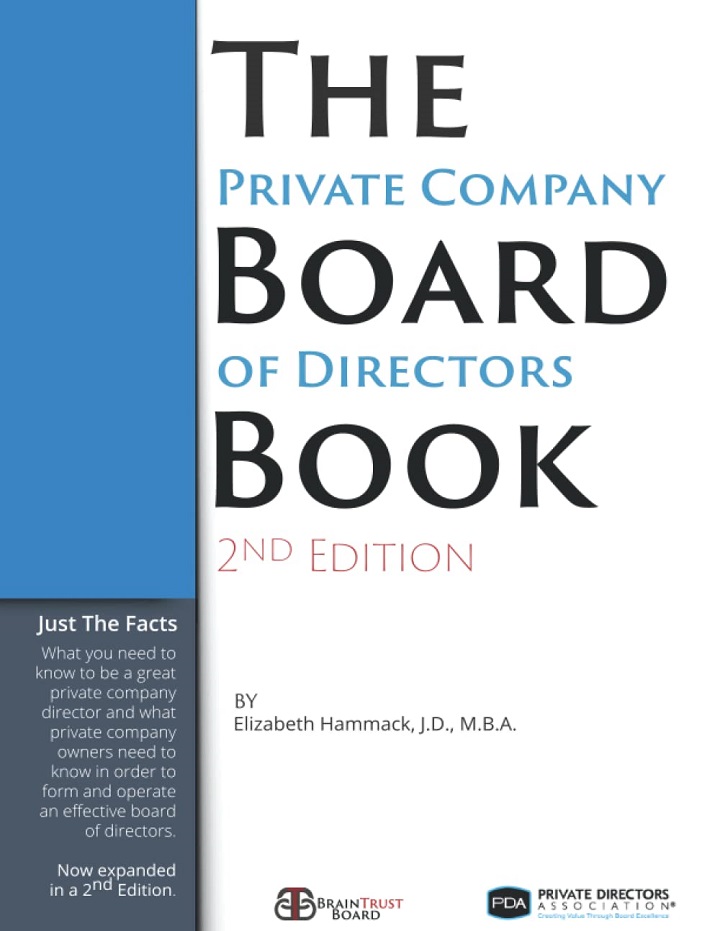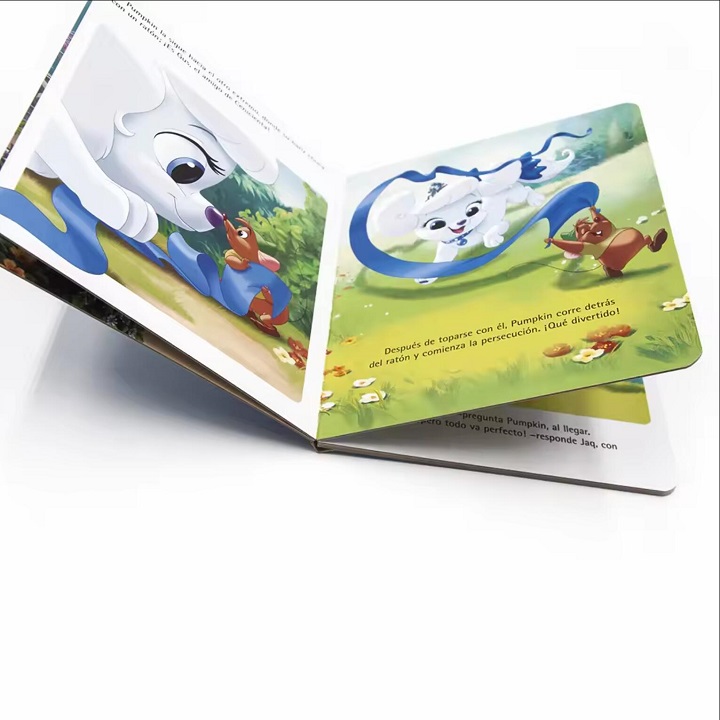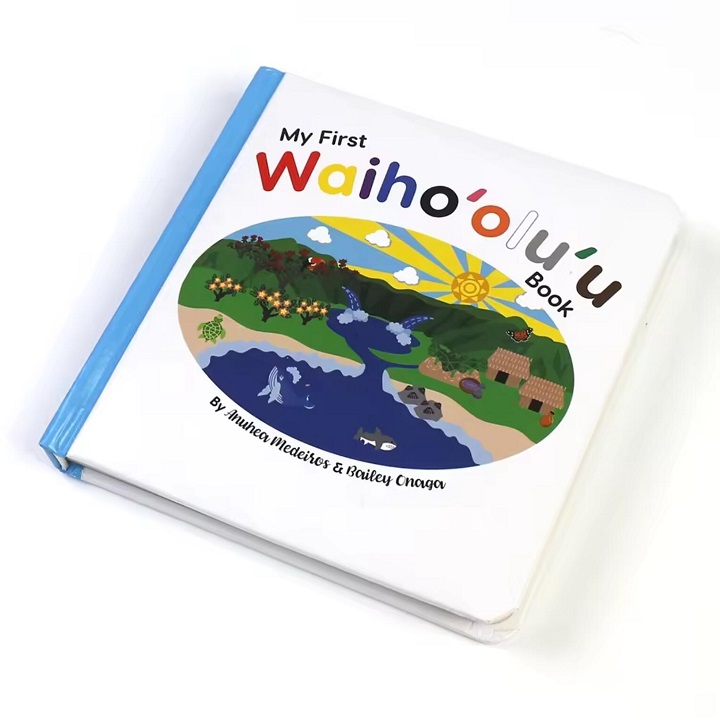Content Menu
● Introduction
● Corporate Board Books
>> Purpose and Components
>>> Components of a Board Book
>> Benefits of Board Books
>> Digital Board Books
>> Best Practices for Creating Effective Board Books
● Children's Board Books
>> History and Purpose
>>> Benefits of Children's Board Books
>> Evolution of Children's Board Books
>> Popular Children's Board Books
>> Creating Interactive Board Books
>> The Role of Illustrations in Board Books
● Cultural Significance of Board Books
>> Corporate Context
>> Children's Context
● Environmental Impact of Board Books
>> Corporate Sector
>> Children's Sector
● Future Trends in Board Books
>> Corporate Sector
>> Children's Sector
● Conclusion
● Frequently Asked Questions
>> 1. What is the purpose of a corporate board book?
>> 2. What are the benefits of children's board books?
>> 3. How have children's board books evolved?
>> 4. What are some popular children's board books?
>> 5. What is the advantage of digital board books in the corporate sector?
>> 6. How do illustrations contribute to children's board books?
>> 7. What role do interactive elements play in children's board books?
>> 8. What is the cultural significance of children's board books?
>> 9. How do digital board books reduce environmental impact?
>> 10. What future trends can be expected in children's board books?
Introduction
Board books are a staple in both corporate and children's literature, serving vastly different purposes but sharing a common thread of durability and accessibility. In the corporate world, board books are comprehensive packets of information prepared for board meetings, while in children's literature, they are designed to be durable and engaging for young readers. This article explores the significance of board books in both contexts, highlighting their benefits, components, and evolution over time.

Corporate Board Books
Purpose and Components
A corporate board book is a detailed collection of documents and information essential for board members to review before a meeting. It includes financial reports, strategic plans, and updates on key issues, ensuring that directors are well-prepared to make informed decisions. The primary purpose of a board book is to provide transparency and accountability, facilitating efficient decision-making during meetings.
Components of a Board Book
Financial Reports: Detailed financial statements and analyses.
Strategic Plans: Outlines of the company's future goals and strategies.
Key Issue Updates: Reports on critical challenges facing the organization.
Benefits of Board Books
1. Informed Decision-Making: Board books provide the necessary data for sound decision-making, helping directors assess risks and opportunities.
2. Transparency and Accountability: By ensuring all directors have access to the same information, board books foster an environment of accountability.
3. Efficiency: Distributing board books in advance saves time during meetings, allowing directors to focus on strategy and discussion.
Digital Board Books
With the advancement of technology, digital board books have become increasingly popular. Hosted on secure board portals, these digital versions enhance the preparation, distribution, and storage of board materials. They offer features such as real-time updates, secure access, and reduced environmental impact.
Best Practices for Creating Effective Board Books
1. Clarity and Conciseness: Ensure that all information is presented clearly and concisely to avoid confusion.
2. Organization: Organize documents logically to facilitate easy navigation.
3. Timeliness: Distribute board books well in advance to allow adequate review time.
Children's Board Books
History and Purpose
Children's board books have a rich history, dating back to the early 20th century. Initially made from thick cardboard to be durable and safe for young children, these books were designed to withstand rough handling and provide an early introduction to literature. The primary purpose of children's board books is to engage young minds, promote language development, and foster a love for reading.

Benefits of Children's Board Books
1. Cognitive Development: Board books enhance cognitive skills by engaging children with vibrant images and simple text, aiding in shape and color recognition.
2. Language Development: Reading board books aloud helps children develop language skills and understand storytelling.
3. Parent-Child Bonding: Board books facilitate bonding between parents and children through interactive reading experiences.
Evolution of Children's Board Books
Over the years, children's board books have evolved significantly. From traditional stories to personalized photo books, the genre has expanded to include diverse themes and interactive elements. Personalized board books, such as those offered by Snapfish, allow parents to create unique stories with family photos, making reading a more personalized experience.
Popular Children's Board Books
Some beloved children's board books include:
The Very Hungry Caterpillar by Eric Carle
I Say, You Say Animal Sounds by Tad Carpenter
Boo Who? by Ben Clanton
Creating Interactive Board Books
Interactive elements such as flaps, buttons, and textures enhance the engagement factor of board books. These features encourage children to explore and interact with the story, promoting active learning and curiosity.
The Role of Illustrations in Board Books
Illustrations play a crucial role in children's board books, capturing young readers' attention and conveying complex ideas in a simple manner. Artists like Eric Carle have made significant contributions to this genre with their iconic collage-style illustrations.

Cultural Significance of Board Books
Corporate Context
In the corporate world, board books symbolize transparency and accountability. They ensure that all board members are on the same page, fostering a culture of informed decision-making. This transparency is crucial for maintaining trust among stakeholders and promoting ethical governance.
Children's Context
Children's board books have a profound cultural impact by introducing young minds to diverse themes and values. They help children understand different cultures, traditions, and social norms, promoting empathy and inclusivity. For example, books like "The Family Book" by Todd Parr celebrate family diversity, teaching children about various family structures.
Environmental Impact of Board Books
Corporate Sector
The shift to digital board books in the corporate sector has significantly reduced the environmental impact associated with printing and distributing physical documents. This transition not only saves paper but also reduces carbon emissions from transportation.
Children's Sector
In the children's sector, the environmental impact of board books is more complex. While traditional board books are made from cardboard and paper, which can be sourced sustainably, the production process still contributes to waste and resource consumption. However, innovations in eco-friendly materials and recycling practices are helping to mitigate these effects.

Future Trends in Board Books
Corporate Sector
Future trends in corporate board books include enhanced digital security, AI-driven analytics, and personalized content delivery. These advancements will further streamline decision-making processes and improve board member engagement.
Children's Sector
In children's literature, future trends will likely focus on interactive digital versions of board books, incorporating augmented reality (AR) and virtual reality (VR) elements. These technologies will enhance engagement and learning outcomes for young readers.
Conclusion
Board books, whether in the corporate or children's context, play a vital role in their respective domains. They provide essential information, promote learning, and foster engagement. As technology continues to evolve, both types of board books are likely to see further innovations, enhancing their accessibility and impact.
Frequently Asked Questions
1. What is the purpose of a corporate board book?
A corporate board book is designed to provide board members with comprehensive information to review before meetings, ensuring they are well-prepared to make informed decisions.
2. What are the benefits of children's board books?
Children's board books enhance cognitive skills, promote language development, and foster emotional connections. They also aid in developing fine motor skills and encourage a love for reading.
3. How have children's board books evolved?
Children's board books have evolved from traditional stories to include personalized photo books and interactive elements, making them more engaging and accessible.
4. What are some popular children's board books?
Popular titles include "The Very Hungry Caterpillar," "I Say, You Say Animal Sounds," and "Boo Who?"
5. What is the advantage of digital board books in the corporate sector?
Digital board books offer real-time updates, secure access, and reduced environmental impact, enhancing efficiency and transparency in board meetings.
6. How do illustrations contribute to children's board books?
Illustrations in board books capture children's attention, convey complex ideas simply, and enhance the storytelling experience.
7. What role do interactive elements play in children's board books?
Interactive elements such as flaps and buttons encourage active learning, curiosity, and engagement with the story.
8. What is the cultural significance of children's board books?
Children's board books introduce young minds to diverse themes and values, promoting empathy and inclusivity.
9. How do digital board books reduce environmental impact?
Digital board books reduce the need for paper and printing, thereby minimizing waste and carbon emissions.
10. What future trends can be expected in children's board books?
Future trends will likely include interactive digital versions with AR and VR elements, enhancing engagement and learning outcomes.

































